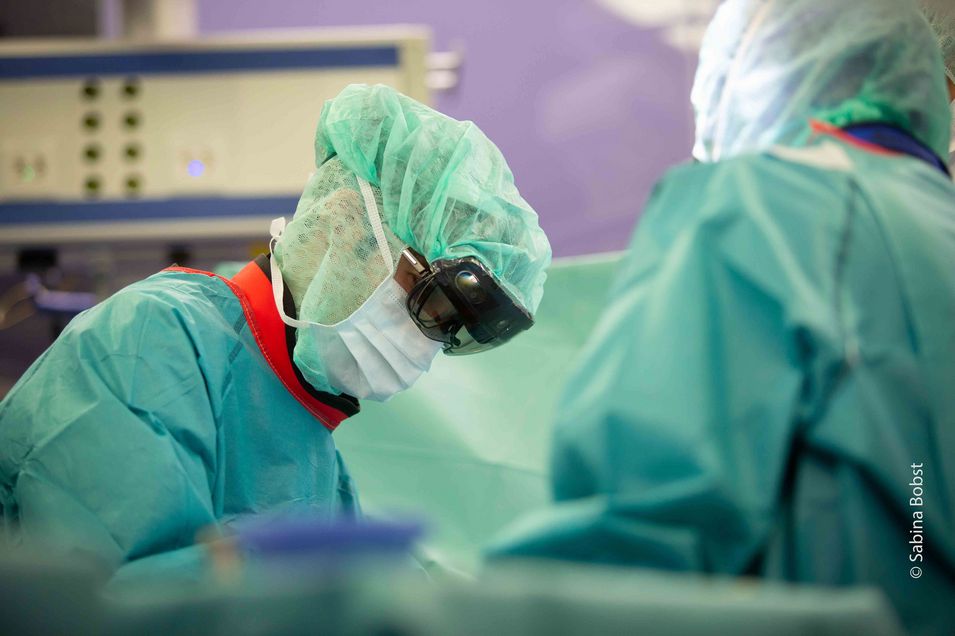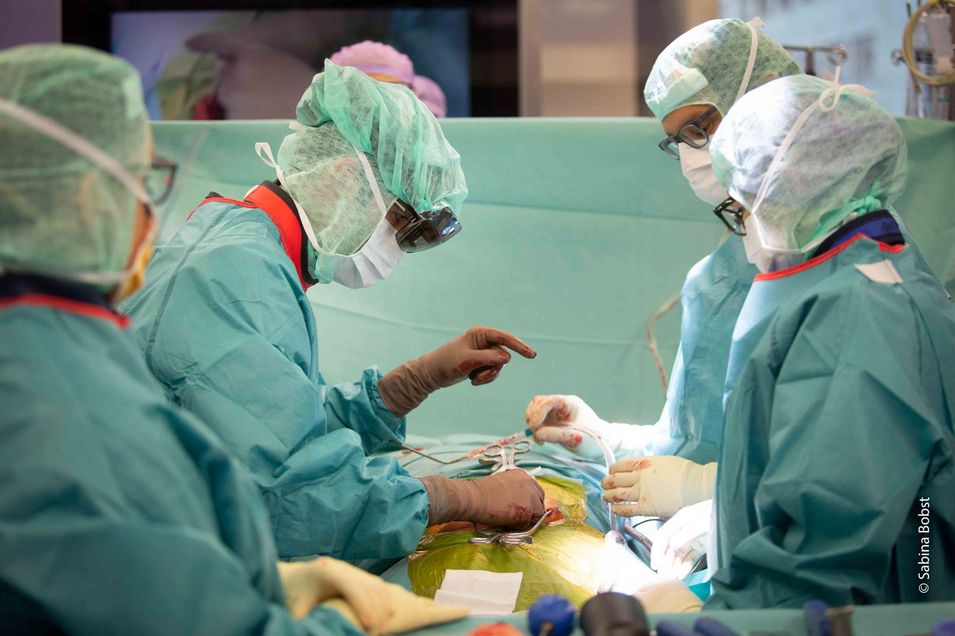World's first holographically navigated spine surgery
A team at Balgrist University Hospital, led by Prof. Dr. med. Mazda Farshad, successfully completed the first holographically navigated spine surgery. This surgery is part of a randomized clinical study which is the first of its kind in the world. The technology was developed at Balgrist University Hospital.
A historical moment
Thanks to many years of research, augmented reality (AR) is entering the operating room. An important milestone has thus been reached. At the beginning of December 2020, the first holographically navigated operation took place at Balgrist University Hospital.
This means we are entering a new era of surgery, which accordingly needs to be worked out scientifically
, explains Prof. Farshad.
Marianne Janik, CEO of Microsoft Switzerland, adds: The collaboration with Balgrist University Hospital shows that augmented reality and artificial intelligence can already support and even complement human skills and expertise. We are proud that our technology meets the very high quality requirements and that we can contribute to this pioneering work.
Prof. Dr. sc. Philipp Fürnstahl, Head of ROCS at Balgrist, sees this as an eminent milestone towards orthopedics shaped by computer technology with the goal of fully digitized treatment
.
Benefit for patients
Using CT imaging, 3D representations of the affected anatomy are generated and directly projected into the surgical field overlaying the real anatomy during the operation. With this, surgeons can see the patient's 3D anatomy. The AR navigation software guides critical step of the surgery. For example, the exact insertion point and trajectory of a screw is shown directly on the patient's anatomy. “AR enhances the surgeon's senses and improves their perception,” said Farshad, Principal Investigator and Medidcal Director of Balgrist University Hospital.
Augmented reality in the operating room
Orthopedics is particularly suitable for the application of augmented reality
, explains Prof. Fürnstahl. The reason for this is that bones hardly move during surgery, which makes it easier to compare them with previously created CT images. The head of ROCS (Research in Orthopedic Computer Science) and his team helped design the software and are providing technical support for the project.
Incremed
Founded in 2018 as a university start-up of Balgrist Beteiligungs AG. The interdisciplinary team of over 20 experts from computer science, medicine and design develops augmented reality applications for patients. Incremed's applications use augmented reality and machine learning to revolutionize medical diagnosis and interventions in orthopedics.
Downloads
How Balgrist University Hospital puts in place technology and innovation to improve patient care.
Musculoskeletal disorders reduce the quality of life by causing pain and dysfunction and reduction in mobility. Balgrist University Hospital is dedicated to the musculoskeletal patient. Its mission as a university hospital is to be responsible for the evolution of the future of musculoskeletal medicine.
Videos on augmented reality in clinical use
Pedicle screws are placed on the left and right of each vertebra to be stiffened. The screws are then connected with rod implants so that the vertebrae can no longer move in relation to each other.
Medical students at ETH Zurich are testing ultrasound-guided biopsy with augmented reality. This study aims to test whether augmented reality helps to make biopsy lesions more precisely and was conducted in collaboration with Kantonsspital Baden, ETH Zurich and University of Zurich.
"Incremed Guard" supports the surgical team by taking over the duty of monitoring the sterile field in the operating room, and alerts the team when the sterie field is at risk of being breached. This reduces the cognitive load of healthcare professionals and enables them to fully focus on the surgery.


